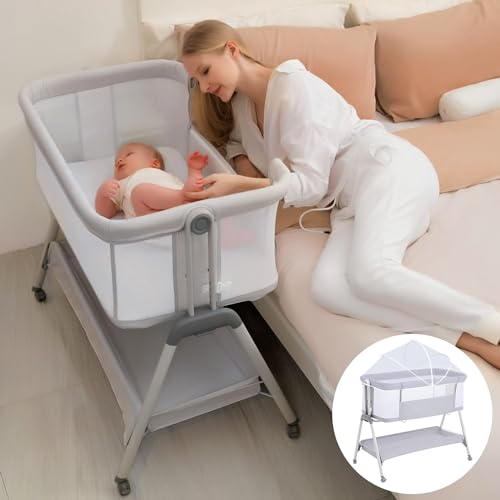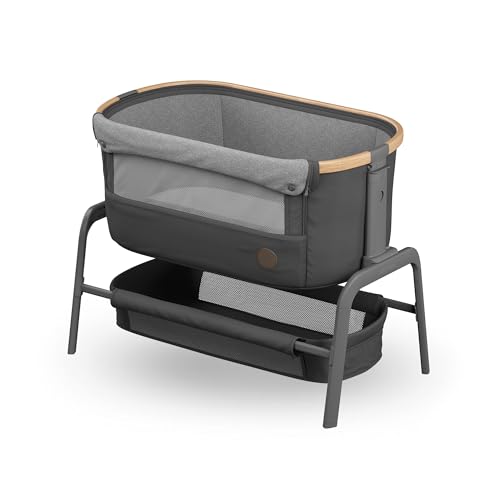You'll Never Guess This Bedside Cosleeper's Benefits
페이지 정보

본문
small bedside cot Cosleeper
A bedside cot used cosleeper can be described as a bassinet that attaches to the side of your adult bed. As long as you adhere to the CSPC guidelines for sleeping spaces for infants it's secure.
 These guidelines are similar in many ways to crib bedding standards. Read more about the guidelines here. When selecting a bedside sleep device safety, comfort, and convenience are the most important factors to consider.
These guidelines are similar in many ways to crib bedding standards. Read more about the guidelines here. When selecting a bedside sleep device safety, comfort, and convenience are the most important factors to consider.
 Safety
Safety
In line with the American Academy of Pediatrics' recommendation that infants sleep in the same room with their parents cosleeping (a method that is sometimes referred to as bed-sharing) is becoming popular among many expecting and new parents. The Academy notes that room-sharing is more secure than sleeping with an infant in the same bed since it reduces instances of Sudden Unexpected Death in Infants (also known as SIDS). The AAP doesn't recommend bed sharing however it does suggest that sleeping on separate sleeping surfaces is a good way to lower the risk of SIDS. The development of the bedside crib was crucial for many families.
A bedside cosleeper is attached to a bed frame that is suitable for adults. It is an equivalent of a crib-style sleeper. The bedside cosleeper allows parents to keep an eye on their baby and allows them the freedom to sleep in their own bed. The top cosleepers adhere to strict safety standards and are constructed with sturdy, high-quality materials. Be sure to look for the Juvenile Products Manufacturers Association (JPMA) stamp of approval, which demonstrates rigorous product testing and quality controls, to ensure your child's safe cosleeping experience.
The safety of a crib is dependent on several factors. It is dependent on how it's set up and secured to the mattress of the parent. It is crucial that the bedside cosleeper be connected to the mattress of the parent in a way that eliminates gaps and spaces, where the infant may be trapped. This could result in a suffocation risk. It is essential that the attachment system for a bedside sleeper be tested in order to ensure that it can withstand forces that may be applied to it during use, like the parent bouncing on and off the sleeper. horizontal force applied to the attachment system or corners of the bedside cosleeper.
The voluntary standard for bedside sleepers incorporates by reference the federal consumer safety standard for bassinets and cradles (16 CFR part 1218) and includes requirements for performance for fabric-sided enclosed openings. The requirements that are mandatory in the standard also address neck and head dangers of entrapment by insisting that following the application and release of 50 lbs. horizontal force in the vicinity of the attachment systems and at the corners of the rocking bedside crib sleeping device, an opening greater than 1.0 in. It is not permitted to create a gap that is greater than 1.0 in. Only read-only copies of the standard can be accessed at ASTM's online Reading Room.
Convenience
Many parents avoid cosleeping because they fear the risk of suffocation, or SIDS or because it's an act of "Ferberization" that forces children to sleep on their own. Anthropologists have noticed for a long time that many primates, mammals, and people from non-Western cultures sleep often. This is because babies are soothed by hearing their mother's voice, and may also learn to soothe themselves.
The best bedside crib with wheels sleepers have clever designs that are attached to the sides of any mattress and swivels so you can easily access it for feedings or diaper changes during the middle of the night. Choose one with adjustable feet that retract to accommodate different mattress heights and a large storage compartment to store all of the necessities for your baby.
Choose a bedside sleeper which can fit in with the standard crib bedding so that it can be used safely as your child grows. Think about a model that's convertible and can be used as a play yard, or a deeper bassinet. It will last for many years.
Portability
Depending on the size of your bedroom a bedside sleeping system with wheels and/or a light base might be more convenient to move around the house than one that has an imposing wood frame or substantial base. The babybay bedside sleeper, HALO bassiNest essencetia, as well as Snoo Smart Sleeper are all portable. They come with adjustable feet that retract to fit platform mattresses and legs that fold inwards to allow maximum proximity to the mattress; and 100% mesh sidewalls to allow ventilation without covering the baby's mouth or nose.
The Arm's Reach Clear-Vue is another popular option that adjusts in 1" increments to fit most adult beds and can also be used as a portable bassinet. It also rotates, allowing the baby to be easily accessible to comfort and nurse her or check on her during the night.
A bedside cot used cosleeper can be described as a bassinet that attaches to the side of your adult bed. As long as you adhere to the CSPC guidelines for sleeping spaces for infants it's secure.
 These guidelines are similar in many ways to crib bedding standards. Read more about the guidelines here. When selecting a bedside sleep device safety, comfort, and convenience are the most important factors to consider.
These guidelines are similar in many ways to crib bedding standards. Read more about the guidelines here. When selecting a bedside sleep device safety, comfort, and convenience are the most important factors to consider. Safety
SafetyIn line with the American Academy of Pediatrics' recommendation that infants sleep in the same room with their parents cosleeping (a method that is sometimes referred to as bed-sharing) is becoming popular among many expecting and new parents. The Academy notes that room-sharing is more secure than sleeping with an infant in the same bed since it reduces instances of Sudden Unexpected Death in Infants (also known as SIDS). The AAP doesn't recommend bed sharing however it does suggest that sleeping on separate sleeping surfaces is a good way to lower the risk of SIDS. The development of the bedside crib was crucial for many families.
A bedside cosleeper is attached to a bed frame that is suitable for adults. It is an equivalent of a crib-style sleeper. The bedside cosleeper allows parents to keep an eye on their baby and allows them the freedom to sleep in their own bed. The top cosleepers adhere to strict safety standards and are constructed with sturdy, high-quality materials. Be sure to look for the Juvenile Products Manufacturers Association (JPMA) stamp of approval, which demonstrates rigorous product testing and quality controls, to ensure your child's safe cosleeping experience.
The safety of a crib is dependent on several factors. It is dependent on how it's set up and secured to the mattress of the parent. It is crucial that the bedside cosleeper be connected to the mattress of the parent in a way that eliminates gaps and spaces, where the infant may be trapped. This could result in a suffocation risk. It is essential that the attachment system for a bedside sleeper be tested in order to ensure that it can withstand forces that may be applied to it during use, like the parent bouncing on and off the sleeper. horizontal force applied to the attachment system or corners of the bedside cosleeper.
The voluntary standard for bedside sleepers incorporates by reference the federal consumer safety standard for bassinets and cradles (16 CFR part 1218) and includes requirements for performance for fabric-sided enclosed openings. The requirements that are mandatory in the standard also address neck and head dangers of entrapment by insisting that following the application and release of 50 lbs. horizontal force in the vicinity of the attachment systems and at the corners of the rocking bedside crib sleeping device, an opening greater than 1.0 in. It is not permitted to create a gap that is greater than 1.0 in. Only read-only copies of the standard can be accessed at ASTM's online Reading Room.
Convenience
Many parents avoid cosleeping because they fear the risk of suffocation, or SIDS or because it's an act of "Ferberization" that forces children to sleep on their own. Anthropologists have noticed for a long time that many primates, mammals, and people from non-Western cultures sleep often. This is because babies are soothed by hearing their mother's voice, and may also learn to soothe themselves.
The best bedside crib with wheels sleepers have clever designs that are attached to the sides of any mattress and swivels so you can easily access it for feedings or diaper changes during the middle of the night. Choose one with adjustable feet that retract to accommodate different mattress heights and a large storage compartment to store all of the necessities for your baby.
Choose a bedside sleeper which can fit in with the standard crib bedding so that it can be used safely as your child grows. Think about a model that's convertible and can be used as a play yard, or a deeper bassinet. It will last for many years.
Portability
Depending on the size of your bedroom a bedside sleeping system with wheels and/or a light base might be more convenient to move around the house than one that has an imposing wood frame or substantial base. The babybay bedside sleeper, HALO bassiNest essencetia, as well as Snoo Smart Sleeper are all portable. They come with adjustable feet that retract to fit platform mattresses and legs that fold inwards to allow maximum proximity to the mattress; and 100% mesh sidewalls to allow ventilation without covering the baby's mouth or nose.
The Arm's Reach Clear-Vue is another popular option that adjusts in 1" increments to fit most adult beds and can also be used as a portable bassinet. It also rotates, allowing the baby to be easily accessible to comfort and nurse her or check on her during the night.
- 이전글11 Ways To Completely Redesign Your All Terrain Rollator Walker With Seat 25.04.11
- 다음글10 Healthy Habits For 20ft Shipping Container For Sale UK 25.04.11
댓글목록
등록된 댓글이 없습니다.
